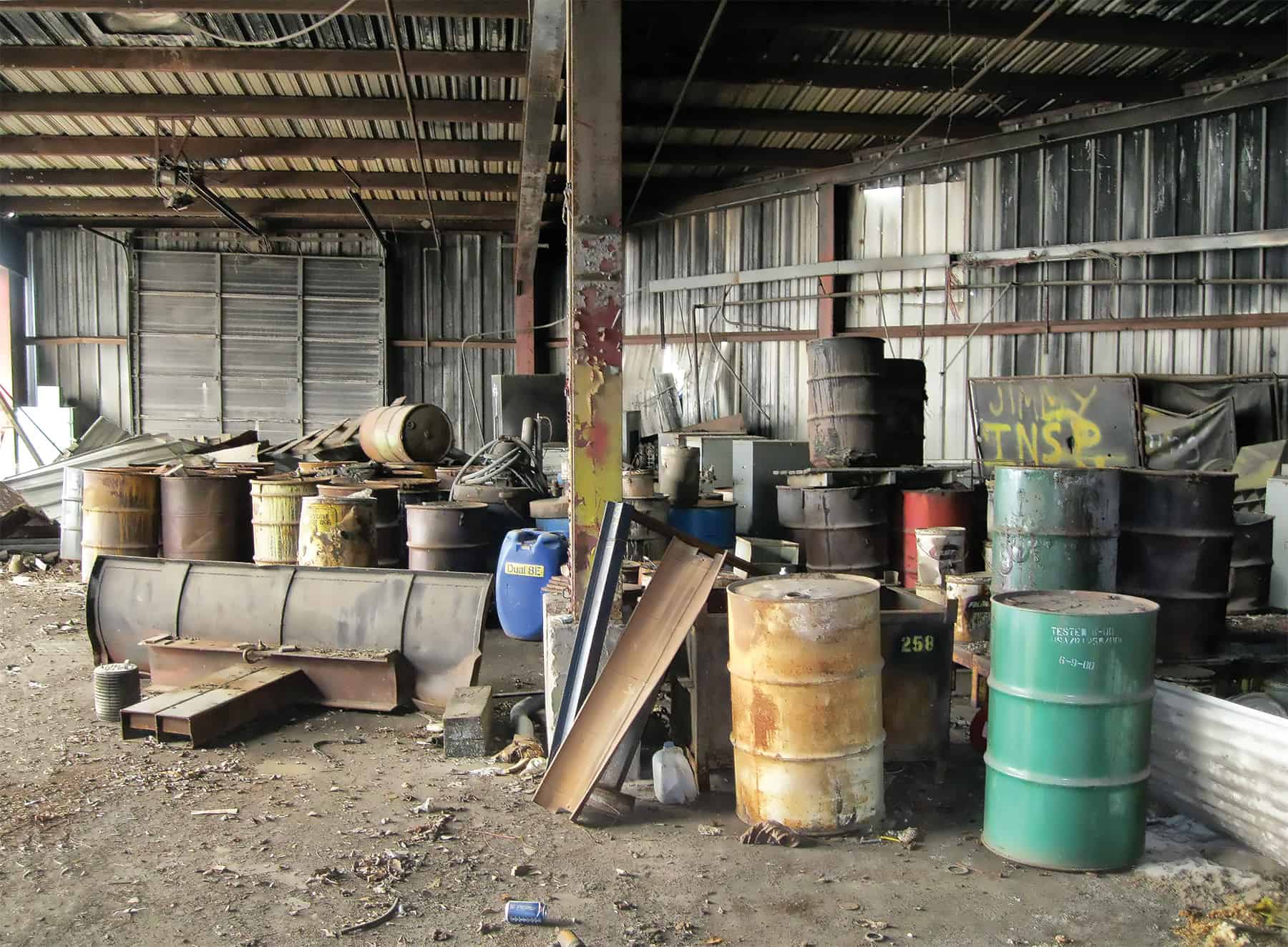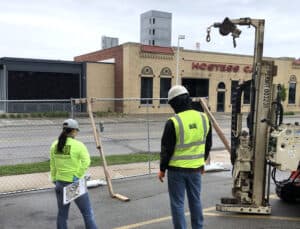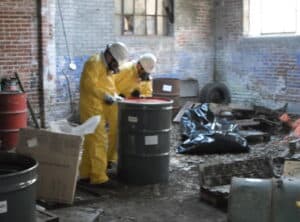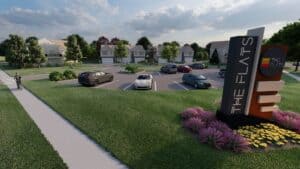
A Guide to EPA Brownfield Redevelopment

It is a familiar scene in many of our communities: an abandoned manufacturing facility continues to deteriorate without an end in sight.
The unsightly appearance of brownfield sites destabilizes the surrounding neighborhood, resulting in lost private investment opportunities, decreased tax revenues, and safety concerns. The problematic site also becomes a drain on financial resources.
Redeveloping brownfield sites can be a challenging undertaking due to the potential harm that hazardous substances, pollutants, or contaminants may have on environmental and community health.
U.S. Environmental Protection Agency’s (EPA) Brownfield Program helps address these environmentally challenged properties while nurturing economic development. EPA offers financial assistance to eligible entities of all sizes, including municipalities, counties, regional planning commissions, and non-profit organizations.
(To access a PDF version of the guide, download the file using the form above.)
Brownfield Frequently Asked Questions
What is a Brownfield?
The EPA defines a brownfield as “a property, the expansion, redevelopment, or reuse of which may be complicated by the presence or potential presence of a hazardous substance, pollutant, or contaminant.” Examples can include commercial or industrial sites such as former manufacturing operations, warehouses, gas stations, dry cleaners, illegal dumps, or vacant lots in developed areas. The agency estimates more than 450,000 Brownfield are scattered throughout the United States.
Does My Community Have Brownfields?
Most likely, yes. No threshold exists to determine if a property is a brownfield. A site must simply struggle with a perception of contamination that impacts future reuse prospects. This potential impact can even emanate from an off-site source. Characteristics common to a Brownfield include long-term vacancy, a lack of routine maintenance, and poor housekeeping practices.
Are funding opportunities available to help address brownfields?
There are a variety of federal resources dedicated to advancing the reuse of brownfields. Many of the programs are available to cities, counties, states, regional councils, redevelopment agencies, and 501(c)(3) non-profit organizations on a competitive basis. Different Brownfields grants assist with various stages of the process, from inventorying and assessment to cleanup planning and remediation. Individual needs and the scale of proposed projects will dictate the appropriate funding mechanism(s) to pursue.
Funding Your Brownfield Redevelopment Project
The federal EPA Brownfield Program provides grants and technical assistance to assess, safely clean up, and sustainably reuse contaminated properties. It encourages acquisition and investment in brownfield redevelopment.
Assessment Grants
Assessment Grants allow communities to take a comprehensive approach to addressing Brownfield. This redevelopment tool permits grantees to inventory, prioritize, and assess potentially contaminated properties.
Assessment Grant applicants can request up to $500,000, and no local match is required.
Other eligible activities involve completing cleanup planning reports, like an Analysis of Brownfield Cleanup Alternatives (ABCA), which is required for Cleanup Grants, market studies, infrastructure evaluations, or reuse visioning to determine feasible reuses on investigated properties. Targeted sites can be concentrated in a specific neighborhood or distributed throughout a community. The project period is up to four years.
“HR Green has assisted the City of Oskaloosa in preparing applications resulting in the city securing $700,000 in EPA Brownfield Assessment Grant funding since 2014. They have been informative and detailed consultants for the city in applying for and administering these funds, and Oskaloosa has trusted them with an additional application for another round of funding in 2023.”
– Sean Murphy | City of Oskaloosa, IA
Cleanup Grants
Cleanup Grants advance the remediation of impacted sites. These Brownfield funds facilitate the removal of identified contamination in soil, groundwater, or building material components such as asbestos or lead-based paint. Grantees receive a ‘No Further Action’ certificate from the respective state voluntary cleanup program upon completion. Applicants can request up to $1 million; no local match is required. The project period is up to four years.
Applications for the EPA Brownfield Grants Program are accepted on an annual basis. Solicitations typically occur in the fall, with proposals due 60 days following the release of grant guidelines. Award announcements are made the following spring.
EPA Targeted Brownfield Assessments (TBA) Program
This fund source promotes cleanup and redevelopment by supplementing the agency’s Brownfield Program. Services available consist of Phase I and II ESAs, including mold, asbestos, and lead-based paint surveys, development of cleanup options with associated cost estimates (ABCA), and conducting community outreach activities.
TBA assistance agreements average approximately $100,000 per project and do not require a local match. Sites for this program are selected locally on a rolling basis.
“The HR Green Team has helped the City of Waterloo navigate some grant funding sources, been our lead consulting team for numerous EPA Assessment Grants, as well as sitting down with us to brainstorm redevelopment options on some blighted sites. Their leadership, experience, and knowledge have helped the City of Waterloo produce many positive projects for the City of Waterloo.”
– Noel Anderson | City of Waterloo, IA
Pre-Positioning for an EPA Brownfield Program Application
Writing a competitive proposal to secure these funds from the EPA’s Brownfield Program can be challenging; however, preparation and planning early can eliminate many frustrations. Now is the time to start!
Thanks to the Bipartisan Infrastructure Law, there is an unprecedented amount of money to award, higher dollar amounts available, longer grant periods, and eliminating match requirements!
Here is what you can do to start preparing today.
- Property Inventory. Develop a list of properties that remain underutilized based on perceived contamination issues (e.g., hazardous substances, petroleum, asbestos, lead-based paint, etc.). This forms the basis of the entire grant.
- Identify Key Stakeholders. The EPA wants to ensure that these grants have grassroots support and that the public is heavily involved in the decision-making process. Partnering groups include neighborhood associations, churches, economic development organizations, and schools.
Devise a Public Outreach Strategy. Grantees need to actively involve and inform the community throughout the grant process. This involves a combination of outreach meetings, printed materials, and electronic communication.
- Formulate Potential Redevelopment Options. How does the community envision each targeted site redeveloping? Residential? Commercial? Industrial? Greenspace? This decision is important as you work through various cleanup options.
Steps in Brownfield Redevelopment: Environmental Site Assessments
Environmental Site Assessments (ESAs) are specialized investigations conducted on commercial and industrial properties to answer questions about the potential presence of contamination. ESAs are often completed to satisfy the due diligence component of real estate transactions, such as a refinancing or the transfer of ownership.
What is a Phase I ESA?
This non-intrusive investigation represents the first step in evaluating a property. It involves an environmental professional (EP) conducting the following activities:
- Reviewing Historical Records. Aerial photography, city directories, fire insurance maps, and topographic maps help the EP piece together how a targeted site and surrounding area were used over time.
- Reviewing State and Federal Environmental Databases. Regulatory records provide the EP with an overview of how industries operate and dispose of their hazardous substances/petroleum products.
- Conducting Interviews. Talking with individuals familiar with a targeted site, such as a current owner, property manager, or local official, assists the EP in better understanding site operations through the collection of anecdotal information and/or permits.
- Conducting a Site Visit. This process allows an EP to visually inspect the targeted site and surrounding area for indications of past or threatened releases into the environment.
The EP compiles this information into a report. If a possibility for impact exists, a Phase II ESA may be completed to evaluate its extent and nature.
What is a Phase II ESA?

Special consideration is given to exposure risks for future users, such as residents, commercial employees, or construction personnel. If samples are found to have higher than acceptable contamination levels, cleanup may be necessary.
Other solutions may include the implementation of deed restrictions, such as a prohibition of private drinking water wells or residential reuse, or the use of engineering controls like the intentional placement of paving for capping purposes. Our team will work with you throughout the entire process to help address your needs.
HR Green Support in Securing Brownfield Funding
Unsure how to navigate the process of redeveloping Brownfield sites? We can help!
HR Green excels at positioning clients to receive grant funds to eliminate Brownfield. Since 2000, our environmental team has written 48 successful EPA applications, resulting in 57 individual grants that leveraged $16.1 million. This includes a 100% success rate since the Federal Fiscal Year (FFY) 2019. We also frequently secure state funds on a project-specific basis to supplement efforts.
Our environmental team specializes in breaking the cycle through Brownfield redevelopment. From site identification through EPA Brownfield grant writing and project implementation, we can assist you every step of the way!
Contact Rose Amundson or Steve Prideaux to schedule an appointment today!
Subscribe to HR Green Insights
We're dedicated to providing up-to-date knowledge and insights about the topics that matter most to you. We know how busy you are, so we will keep this simple, covering just one topic per email. Once you've subscribed, you can easily customize your preferences to receive only the updates relevant to you.





 Devise a Public Outreach Strategy. Grantees need to actively involve and inform the community throughout the grant process. This involves a combination of outreach meetings, printed materials, and electronic communication.
Devise a Public Outreach Strategy. Grantees need to actively involve and inform the community throughout the grant process. This involves a combination of outreach meetings, printed materials, and electronic communication.



